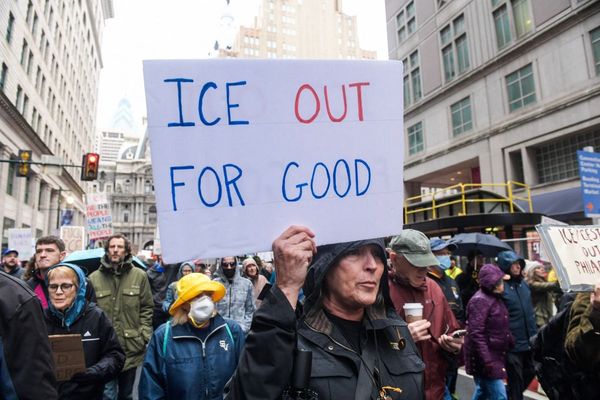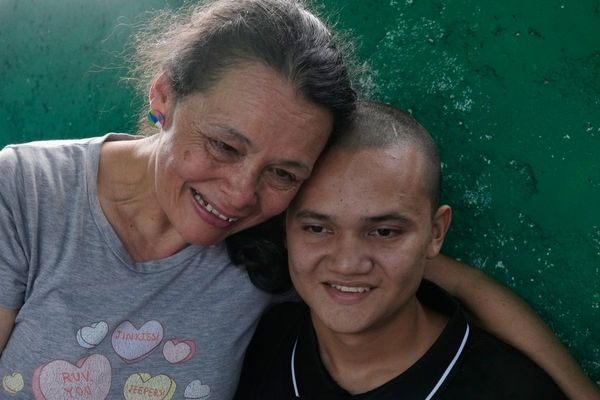
Horror movies? Psh. Child’s play! Now manga? That’s where the sophisticated scares are to be found. Any schlock jockey can thrill with a jumpscare, but it takes a true artiste to inspire terror with a still image. These manga artists manage to pack more panic one panel than many film directors can drum up in their entire cinematic careers! If you’re looking for true terror, these are 10 manga that are scarier than any horror movie. Honestly, they should just film over the shoulder of someone turning the pages of this nightmare fuel. I’m no studio exec, but I think that might be the makings of the next summer horror blockbuster.
Uzumaki

Arguably the most significant horror manga artist to hit the contemporary market, Junji Ito has carved out a name for himself as the Stephen King of the genre. While his stories of robot-legged fish and cannibalistic planets are nothing short of glorious, his magnum opus is Uzumaki – a horror novel that revolves around a revolving shape. The town of Kurouzu-cho is being haunted not by ghosts or demons, but by geometry! Math-haters will be horrified to learn that this little village has been cursed by spirals, a seemingly innocuous pattern that soon becomes sinister. Why is it scarier than any horror movie? Because this novel simply can’t be adapted into a film. Spirals turn people into snails, create black holes in the eyes of young women, and generate whirlwinds with human faces. Could you imagine the terrible CGI of a Hollywood adaptation trying to tackle the source material? The sublime and surreal horror would quickly devolve into silliness. Like the spiral shape itself, some stories can only be drawn.
Monster

Monster by Naoki Urasawa is the story of a man who once had it all. Dr. Kenzo Tenma was a top surgeon in Germany, respected by his peers, adored by his fiancé, set up for a long and lustrous career. When he went against the hospital higher-ups wishes and saved the life of a headshot child over a prominent politician, his life evaporated. His lost his job and his fiancé, but at least he can sleep at night knowing he made the right decision, right? Wrong. The young boy Tenma saved grew up to be one of Germany’s prolific serial killers, an angel-faced mastermind attempting to orchestrate human extinction. The sociopathic Johan Liebert carries a terrifying charisma that no actor could ever capture, but Dr. Temna is going to try to capture him for real – ending the reign of terror a medical mistake began. Hannibal Lector, eat your heart out.
Berserk

Arguably the greatest work of dark fantasy ever conceived, Kentaro Miura’s Berserk inspired countless titles – including the grimdark world of Dark Souls. The plot revolves around a linebacker-sized mercenary named Guts who wields a sword the size of a Honda Civic, and uses it to cut through the demons standing in his way. He’s on a revenge quest to hunt down a former comrade who branded him and his companions for infernal sacrifice – an act that Guts took personally. Aside from a glorious but short lived 90’s anime adaption, the series has never been successfully transformed into a work of cinema. That’s okay, Berserk doesn’t need it. It’s the greatest horror manga of all time – why try to fix what ain’t broke?
Akira

They say that cosmic horror is famously hard to adapt into any medium outside of the written word – Katsuhiro Otomo obviously didn’t get the memo. Part cyberpunk thriller, part eldritch abomination, Akira is one of the most seminal works of sci-fi ever conceived. The action takes place in Neo Tokyo, a metropolis built upon the ruin of the old city destroyed during a future world war. The dystopian streets are haunted by lawless biker gangs, but when young rider Tetsuo comes into contact with an escaped government lab experiment, he’ll learn that the world is full of more terror than he ever thought possible. The line begin truth and hallucination begins to blur as Tetsuo’s newfound psychic powers manifest, which will eventually cause him to rip reality to shreds unless his friends can help him. While the manga was adapted into an equally brilliant anime film, a live action adaption is out of the question.
Gantz

Gantz… where do I begin? Hiroya Oku’s manga is part isekai, part video game simulator, part first contact sci-fi, part action thriller, and part cosmic horror. It’s the story of Kei Kurono and Masaru Kato – who both die in a train accident in the novel’s first pages. Revived by an alien orb calling itself “Gantz,” they and a group of other resurrected dead are given weapons and told to battle eldritch horrors for points. Trapped in a death game that’s half Fortnite and half Call of Duty Zombies, the survivors are forced to murder waves of extraterrestrial enemies in some sort of hellish afterlife. Gory, grim, and slightly gratuitous, Gantz is a coming of age nightmare that makes The Hunger Games look well fed.
The Drifting Classroom

The Drifting Classroom by Kazuo Umezz is a manga horror classic, a post apocalyptic version Battle Royale where the humans are all on the same side – for a time. After an earthquake triggers the sudden vanishing of a Japanese elementary school, the teachers and students are horrified to discover that the building has reappeared in the distant future. As supplies and sanity dwindle, the teachers and staff begin to murder one another while the students barely hold on. Set upon by horrible creatures and bizarre viruses, the students’ only source of hope is Nishi – a psychic who is able to communicate with people in the past. It’s a gut-wrenching story of survival, coming of age horror that gives Stephen King a run for his money.
Blood On The Tracks

Blood On The Tracks is slice of life horror, a peeling back of the mundane to reveal the macabre beneath. The plot follows Seiichi Osabe, a sixth grade boy whose mother loves him very much, so much that she’d kill for him. While most moms would do anything to protect their children from harm, Seiichi’s mom might be… overreacting a bit? After Seiichi’s cousin Shigeru jokingly threatened to push him off a cliff on a hiking trip, Seiichi’s mom did the same to Shigeru – but for real. With a cousin in a coma, Seiichi learns that a mother’s love can be a dangerous thing. If he can’t stay safe any and all forms of harm, then no one else will be safe either.
Hauntress

Hauntress by Minetarō Mochizuki is the story of Hiroshi Mori, an everyday college student whose uneventful life 180’s after a strange woman shows up in his apartment complex, ringing the doorbell of his neighbor. After offering her a hand, she shifts her focus to him – proving that no good deed goes unpunished. As the woman’s behavior toward Hiroshi becomes increasingly more persistent and erratic, he begins to suspect that his *title drop* hauntress is more than she appears to be. The story borrows from a famous Japanese urban legend about an ominous woman that wanders the city streets, who in reality is an angry ghost. While Hauntress is more ambiguous, it’s no less terrifying.
Goodnight PunPun

While technically categorized as a drama, Goodnight PunPun by Inio Asano is so universally disturbing that one could easily earmark it as psychological horror. It’s the four part story of Punpun Onodera – a Japanese boy who we follow from childhood to early adulthood. First taking the form of an adorable little duck-thing covered in a sheet, PunPun warps and perverts as he slowly experiences a downward spiral of self. Raised by a suicidal mother and alcoholic father, the young PunPun’s life is marred by emotional abuse and neglect. As a young adult, he mirrors his parents’ abusive relationship with his own intimate partners, propagating a cycle of trauma. It’s a surreal and difficult read that relies on a different sort of monster to unsettle and terrify – the human kind.
PTSD Radio

In a parallel reality, Masaaki Nakayama enjoys the commercial acclaim of Junji Ito, PTSD Radio proves that his sense for horror is equally acute. The series is similar to Ito’s Uzumaki in that it finds horror in the seemingly innocuous: in this case, human hair. Though seemingly unrelated, the horror vignettes that make up PTSD Radio are threaded together by the thing that grows out of people’s scalps, which, according to Japanese legend, falls under the purview of an ancient god. After a shrine to a hair spirit known as am “Ogushi” is profaned, the act causes a ripple effect across time. The spiritual curse echoes across multiple narratives, each one centered around the cutting or growing of hair. It’s a deeply unsettling read that leaves you with more questions than answers, but one thing is certain, every day is a bad hair day in the world of this manga.
Have a tip we should know? [email protected]







